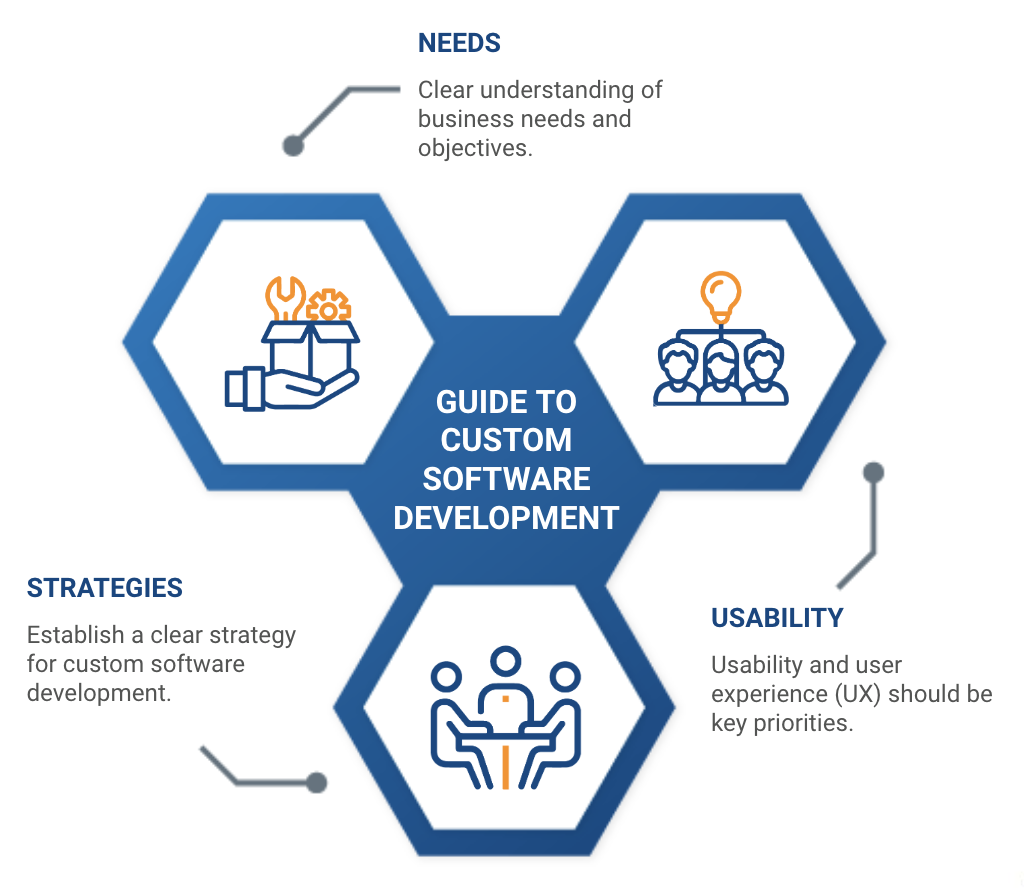
Imagine a logistics company facing significant challenges in managing its supply chain. As your company grows and expands, you find that the commercial software systems available on the market cannot fully meet your specific and complex needs. Here is an example of a situation where custom software development would be timely:
The logistics company has been using a commercial warehouse management system for several years to manage its warehouse and distribution operations. However, as the company grows, the existing system cannot effectively handle the increasing volume of inventory, specific customer demands, and real-time product tracking requirements.
It is in this context that the development of customized software comes into play, since it allows the creation of a system completely adjusted to the needs of the company, which can mark success or failure in a truly very competitive market.
In this guide, we will talk about the fundamentals and best practices of custom software development for CEOs and business leaders.

Tips for CEOs to get started with custom software development
1. Understand the needs and objectives of the business
Before embarking on a custom software development project, it is essential to understand the specific needs and objectives of the company. This involves identifying the problems and opportunities that the custom software must address, as well as clearly defining the business objectives that its implementation is expected to achieve.
By having a clear understanding of business needs and objectives, CEOs can effectively guide custom software development to maximize its impact on the organization.

2. Establish a software development strategy
Once the needs and objectives of the business are understood, it is important to establish a clear strategy for custom software development. This includes defining the scope of the project, the resources needed, the available budget, and the delivery schedule.
It is also crucial to determine whether development will be done in-house or an external vendor. By establishing a solid strategy from the beginning, CEOs can minimize risks and maximize the chances of project success.
3. Collaboration between departments
Custom software development is not solely the responsibility of the technology team. It is important to encourage collaboration between different departments of the company, including marketing, sales, operations and customer service.
These departments can provide valuable information about the needs and expectations of end users, as well as participate in the design and testing process of custom software. Collaboration between departments ensures that the software developed meets the business needs and expectations of all stakeholders.

4. Prioritize usability and user experience
In custom software development, usability and user experience (UX) should be key priorities. Intuitive, easy-to-use software not only improves employee productivity and efficiency, but also increases customer satisfaction and brand loyalty. It is essential to involve end users in the design and testing process to ensure that custom software meets their needs and expectations.
5. Implement an agile approach
Given the fast pace of today's market, it is essential to take an agile approach to custom software development. This involves dividing the project into small iterations or sprints, each focused on delivering specific functionality in a short period of time. Agile methodology allows for greater flexibility and adaptability as business requirements and priorities change over time.

6. Continuous monitoring and evaluation
Once custom software has been implemented, it is important to perform continuous monitoring and evaluation to ensure its long-term performance and effectiveness. This involves collecting data on software usage, user feedback, and business results achieved. With this information, CEOs can make adjustments and improvements as necessary to optimize the performance and value of custom software for the business.
Custom software development offers businesses the opportunity to drive innovation, efficiency and growth in a competitive market. For CEOs and business leaders, understanding the fundamentals and best practices of custom software development is essential to maximize its impact and ensure the long-term success of the company. By following this guide, CEOs can confidently lead custom software development projects that drive their organization's growth and competitiveness in today's marketplace.

